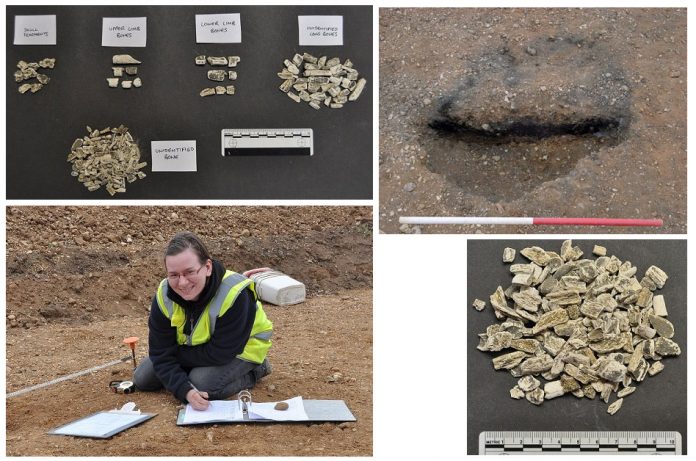Burnt material, including 118g of cremated bone, was placed into a pit with a diameter of about a metre, and then backfilled with soil. Three radiocarbon dates, two from bone fragments and one from charcoal, have confirmed a date of 5,600BC for the deposit. Dr Louise Loe, head of burials at Oxford Archaeology, analysed the bone and determined that it represents the remains of at least one adult, although the total weight of bone is only about 7% of what would be expected from a complete individual. This, together with the large amount of charcoal present, suggests that the material represents a deposit of some of the remains from a pyre, and not all of the cremated bone from it.
Record-changing
Prior to this discovery, only around 20 examples of any human bone were known from the British Mesolithic (which spans the period from around 10,000BC to 4,000BC), none of which had been cremated. However, there is a group of three cremations from this period known in Ireland, and several from continental Europe, so our site seems to fit into a wider European pattern.
Nick Gilmour, who lead the excavation, said “We were expecting this cremation to date to the Bronze Age: we were so surprised when the first radiocarbon date came back as Mesolithic that we did two more to double-check!”
Three struck flints were also found within the same pit. Dr Barry Bishop, who studied the flint from the site, confirmed that these could technologically belong to the Mesolithic period. Although none were finished tools, they included blades that are still sharp and could have been used for cutting. Further Mesolithic flints were found in other parts the site.
Changing our understanding of Mesolithic culture
This significant find sheds new light on early human society in Britain. The Mesolithic was a time when people were largely nomadic hunter gatherers, before farming had arrived and little is accurately known of their beliefs. This deposit shows that people had the required understanding of fire and pyre technology to achieve the high temperature required for complete combustion of the corpse – probably greater than 600 degrees centigrade. It also hints at a belief system where the dead were sufficiently respected that they were not simply abandoned (as has been previously believed), and that time and resources were invested in funerary practices despite a mobile hand-to-mouth existence.
The pipeline was constructed for Essex and Suffolk Water, who funded the excavations. As well as the cremated remains, a Bronze Age barrow, Early Roman site, Saxon settlement and a medieval building were found.
See also
- Mesolithic cremations as elements of secondary mortuary rites at Vlasac (Serbia)
Boric, Dusan, Raičević, J. and Stefanović, S. 2009. Mesolithic cremations as elements of secondary mortuary rites at Vlasac (Serbia). Documenta Praehistorica 36 , pp. 247-282. 10.4312/dp.36.16 (FULL PDF) - A Mesolithic cemetery: Ireland’s oldest burials
- Collins T. & Coyne, F. (2003) ‘Fire and Water… Early Mesolithic Cremations at Castleconnell, Co. Limerick’, in Archaeology Ireland, Vol. 17, No. 2 (Summer 2003), Wordwell, pp. 24-27
- Three Cremations and a Funeral: Aspects of Burial Practice in Mesolithic Vedbæk. / Petersen, Erik Brinch; Meiklejohn, Christopher.Mesolithic on the Move. Oxford : Left Coast Press, 2003. p. 485-493. (FULL PDF)
Source: Oxford Archaeology


